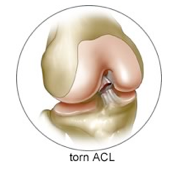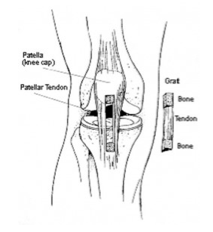ACL reconstruction in Beverly Hills and Los Angeles
The Basics of ACL Reconstruction
The anterior cruciate ligament, simply referred to as the ACL, is one of the four crucial ligaments that confer stability to the knee joint. It prevents the femur (thigh bone) from sliding on the tibia when a person bends the knee. It also provides rotational stability to the knee joint during movement. An ACL injury is a common predicament that many athletes face.
All too often, it spells the end of a once booming career. With current ACL reconstruction technology, athletes are often to return to high levels of competition. The injury is not limited to athletes alone but is also a cause of concern in individuals whose work description entails strenuous activity. Damage to the ACL can be partial or complete.
Types of treatment
 Once the ligament is damaged, the treatment modality depends on the extent of the damage and the desired function of the knee joint. In incomplete ACL rupture, a conservative method of treatment may be utilized.
Once the ligament is damaged, the treatment modality depends on the extent of the damage and the desired function of the knee joint. In incomplete ACL rupture, a conservative method of treatment may be utilized.
If surgery is not undertaken, the patient goes through rigorous rehabilitation and strength and function. This is a viable option for individuals whose work is not strenuous and they are not high level athletes. When the ACL is completely torn, surgery is the best treatment option if the person desires to perform any activities necessitating rotation of the knee.
ACL reconstruction
 Stitching together of the severed ends of the tendon is not a viable option. This is because of the dismal outcome this has been found to have in the long run. During modern ACL surgery, the ACL is reconstructed from tendon that is harvested from another body site, or from a cadaver. The patella tendon is the most utilized in this procedure. It has a high success rate but patients often complain of symptoms of pain when kneeling, stiffness, instability and pain behind the kneecap after the operation.
Stitching together of the severed ends of the tendon is not a viable option. This is because of the dismal outcome this has been found to have in the long run. During modern ACL surgery, the ACL is reconstructed from tendon that is harvested from another body site, or from a cadaver. The patella tendon is the most utilized in this procedure. It has a high success rate but patients often complain of symptoms of pain when kneeling, stiffness, instability and pain behind the kneecap after the operation.
The hamstring tendon can also be used as the harvest site. The patient can use an allograft that is donated by a dead person. This option is pursued in cases where a prior attempt to repair the ACL has failed. Regardless of the source of tissue used in the repair, rehabilitation is a key component of the healing process. It is mandatory that the patient goes through a well structured rehabilitative program to restore function to the knee. Most surgeons agree that the rehabilitation is responsible for at least 50% of the outcome!
In the recent past, the hamstring tendon is gaining popularity over the patella tendon as the tendon used for the repair of a torn ACL. Recent studies have shown that when used, it provides greater joint stability and the patient is able to reclaim more of the knee function. It is also associated with less morbidity to the knee joint.
In the past, muscle wasting that is commonly associated with ACL damage has baffled surgeons. Regardless of how excellent the repair was done, muscle wasting was sill evidenced in muscles of the thigh. The wasting meant that it was impossible to restore original power to the affected limb. This is an obstacle especially for athletes. This is only one reason why intense PT and rehabilitation is necessary.
Dr. Raj is a Double Board Certified sports medicine doctor in LA and Beverly Hills, who has performed hundreds of successful ACL reconstruction procedures. Call (310) 247-0466 today!
